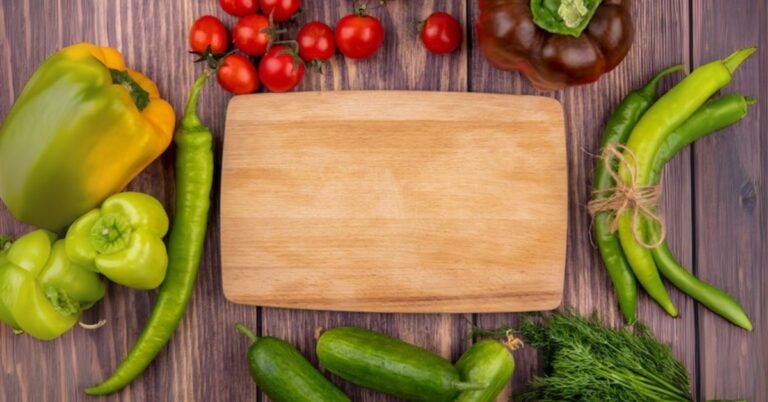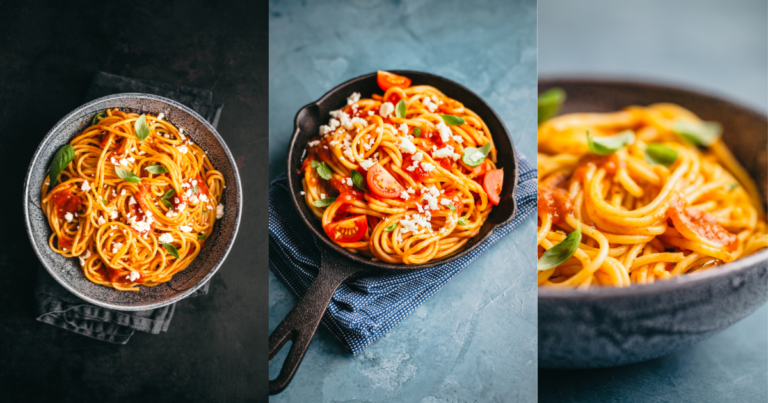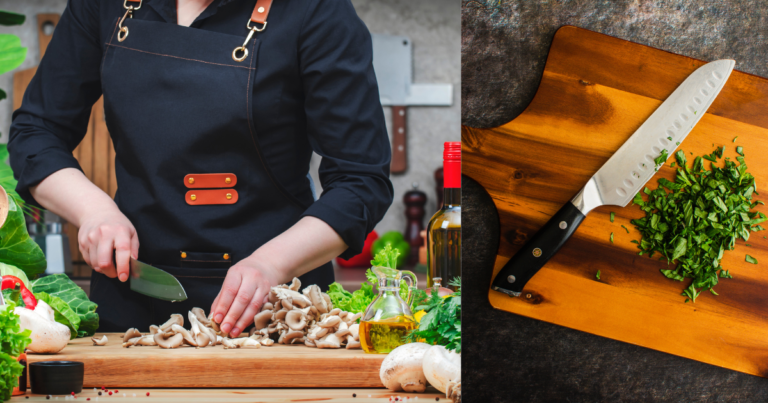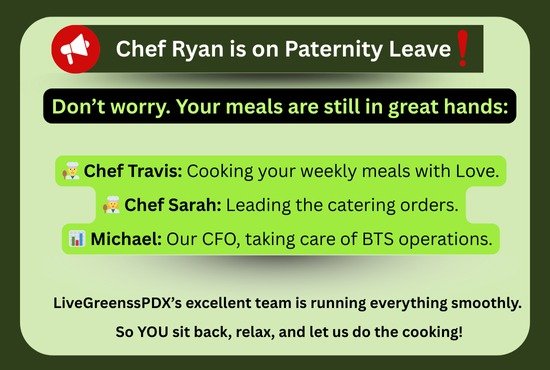Can You Put Hot Food in the Fridge? (+ Storage Tips)

Why Leftover Storage Matters More Than You Think
The event is over. Guests are gone. You’ve got trays of leftover food that you don’t want to waste. The food’s still hot. And you’re thinking… “Should I put it straight in the fridge or leave it out to cool?”
This is where many people make a risky mistake. Improper storage of hot leftovers is one of the top causes of foodborne illness. Letting food sit too long at room temperature gives harmful bacteria the perfect chance to grow.
In this post, you’ll learn how to store hot food in the fridge without risking your health…or your leftovers. Whether you’re a home cook or a pro after a catering gig, these food safety are for you.
Can You Put Hot Food in the Fridge? Yes—Here’s How to Do It Safely

The short answer is yes. You can put hot food in the fridge. In fact, food safety guidelines recommend it.
Many people believe that putting hot food in the fridge will damage the appliance or make other foods spoil. That’s a common myth. Your fridge is designed to handle temperature changes. What matters more is how you store the food.
Leaving food out to cool for too long is risky. According to the USDA, bacteria grow fastest between 40°F and 140°F, also known as the “danger zone.” If your food stays in this range for more than two hours (or one hour if it’s over 90°F), harmful bacteria like Salmonella and E. coli can multiply quickly.
The FDA also stresses this point. To keep leftovers safe, they recommend refrigerating food as soon as possible. Waiting for food to cool completely can increase the risk of foodborne illness.
For the best food safety practice, refrigerate hot leftovers within two hours. If the portions are large, divide them into shallow containers. This helps the food cool faster and evenly.
You won’t break your fridge. And you won’t ruin other food…if you store things the right way.
When and Why You Should Cool Hot Food Before Refrigerating
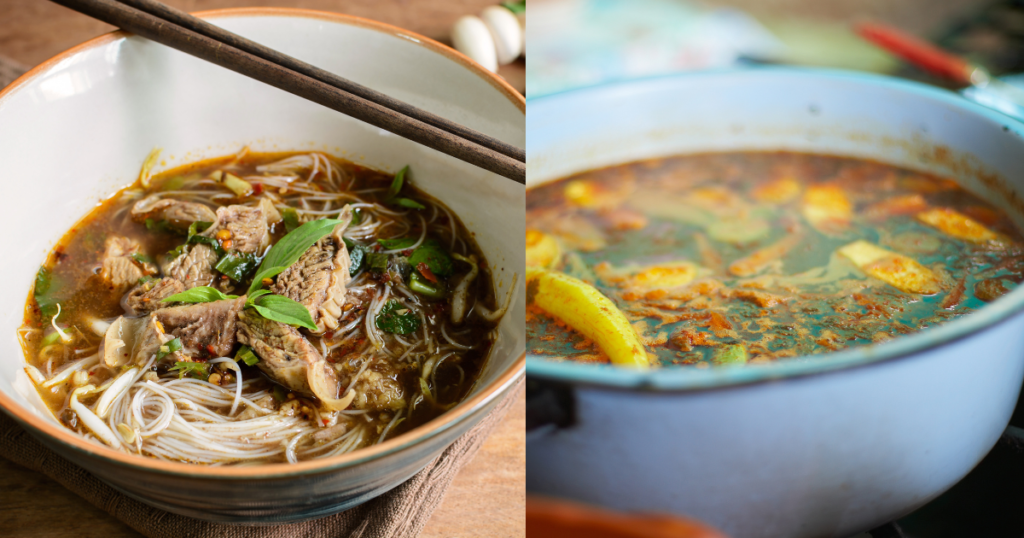
You can refrigerate hot food…but there are times when cooling it down first is the safer choice.
If you’re dealing with large quantities or dense foods (like big pots of stew, lasagna trays, or casseroles), they won’t cool evenly in the fridge. The center can stay warm for too long, keeping the food in the danger zone (40°F to 140°F), where bacteria multiply quickly. This increases the risk of foodborne illness, even if the food eventually feels cold on the outside.
Another risk? Very hot food can raise the temperature inside your fridge, putting nearby foods…like dairy, meats, and leftovers—at risk.
When to cool food first:
- Large batches of food
- Thick or dense items
- Hot dishes in deep containers
In these cases, cooling food quickly before refrigerating protects the quality and safety of your meals.
READ: How to Get Rid of Garlic and Onion Smell from Hands
How to Cool Hot Food Safely Before Refrigerating
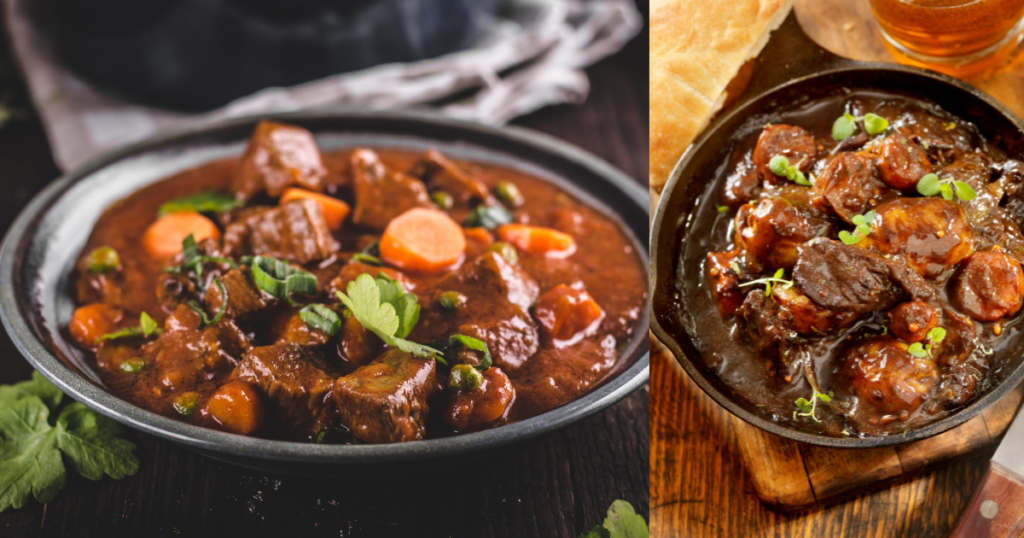
Sometimes, cooling food quickly is the best move for safety. Here’s how to do it right.
1. Transfer to Smaller Portions
Large amounts of food hold heat longer. To speed up cooling, divide hot food into smaller portions and transfer them into shallow containers. This exposes more surface area and allows heat to escape faster.
This is best for the big batches of soups, stews, and casseroles.
2. Use Shallow Containers
Always choose wide, shallow containers—about 2 inches deep or less. Shallow containers help the food cool evenly and quickly. Avoid deep pots or bowls, where heat stays trapped inside.
Important tip: Leave space between containers in the fridge so cold air can circulate.
3. Try the Ice Bath Method
For faster cooling, place your food container into an ice-water bath. Fill a larger bowl or your sink with ice and cold water, then set the container inside. Stir occasionally to release heat and speed things up.
Here’s the step-by-step process:
- Fill a sink or bowl with ice and water.
- Place the hot food container in the bath.
- Stir the food every few minutes.
- Once cooler, move to the fridge.
4. Stir While Cooling (For Soups and Sauces)
For liquids like soups, sauces, and stews, stirring as they cool helps release trapped heat. It ensures even cooling and prevents the center from staying warm too long.
NOTE: Don’t cover until the food is cooler to avoid trapping steam.
Pro Tip:
Never leave hot food on the counter for hours. Bacteria thrive in warm temperatures and multiply quickly.
READ: 6 Ways to Fix Over Salted Soup (Without Starting Over)
The Right Way to Store Leftovers in the Fridge (And Avoid Waste)
Once your food is cool enough, it’s time to store it properly. Safe leftover storage isn’t just about keeping things fresh—it’s about avoiding contamination and waste.
1. Use Airtight Containers
Always use airtight containers to prevent bacteria, odors, and moisture loss. These containers create a sealed barrier that keeps your leftovers safe.
- Glass containers are non-porous, don’t absorb odors, and are microwave-safe.
- BPA-free plastic containers are lightweight and shatterproof but may stain over time.
Avoid containers with cracked lids or loose seals.
2. Skip the Aluminum Foil
Foil doesn’t create an airtight seal. Gaps let in air, which dries out food and increases the risk of cross-contamination from other items in the fridge.
Use foil for temporary covering only…like when cooling food before transferring it to proper storage.
3. Label and Date Everything
Date your leftovers as soon as they go in the fridge. It’s the easiest way to track freshness and avoid guessing later.
- Follow the USDA guideline: Eat refrigerated leftovers within 3 to 4 days.
- Freezer leftovers? Use them within 2 to 6 months, depending on the type of food.
4. Organize for Optimal Freshness
Keep your fridge organized to avoid forgotten containers. Place older leftovers at the front and new ones in the back so you use them in order.
Set your fridge to 40°F (4°C) or lower. This slows bacteria growth and keeps leftovers safe.
READ: Can You Freeze Sauce in Plastic Bottles? And Other Alternatives
Common Myths About Refrigerating Hot Leftovers
There’s a lot of confusion around refrigerating hot food. Let’s clear up some common myths.
Myth 1: Hot Food Will Damage the Refrigerator
Truth: Modern refrigerators are built to handle occasional hot items. One dish won’t raise the fridge temperature enough to harm the system or other food. Just avoid crowding the space around it…allow air to circulate.
Myth 2: Hot Food Causes Other Foods to Spoil
Truth: As long as you store hot food in airtight containers, it won’t affect surrounding items. The key is sealing in moisture and heat, so it doesn’t release steam or warmth inside the fridge.
Myth 3: Letting Food Cool on the Counter Is Safer
Truth: Leaving food out for too long increases the risk of bacteria growth. Food cools through the danger zone (between 40°F and 140°F) slowly on the counter. It’s safer to cool food quickly and refrigerate it within two hours.
Chef-Approved Food Safety Tips for Leftover Storage

Want to keep your leftovers fresh and safe? Here are some pro tips used in professional kitchens.
1. Store Foods in Uniform Containers
Use containers that are the same size and shape. They stack neatly, take up less space, and allow air to circulate. Plus, uniform portions cool more evenly and quickly.
2. Use Paper Towels for Moisture Control
Place a paper towel in greens or cut fruit containers to absorb excess moisture. This prevents sogginess and helps produce stay fresh longer.
3. Clean Your Fridge Weekly
Wipe down shelves and drawers at least once a week. It helps prevent spills, mold, and cross-contamination. A clean fridge also makes it easier to spot and use leftovers before they go bad.
Pro Tip
In professional kitchens, leftovers are logged, labeled, and tracked religiously. Do it at home for better safety and less waste.
READ: Why Should You Avoid Loose Sleeves in The Kitchen + Safe Kitchen Suits
How Long Can You Keep Leftovers in the Fridge?
Here’s a quick reference chart based on USDA and FDA guidelines. Stick to these timeframes to avoid foodborne illness and keep your meals safe to eat.
| Food Type | Fridge (40°F / 4°C) | Freezer (0°F / -18°C) |
| Cooked Meat (Beef, Pork, Lamb) | 3-4 days | 2-6 months |
| Cooked Poultry (Chicken, Turkey) | 3-4 days | 4 months |
| Soups and Stews | 3-4 days | 2-3 months |
| Cooked Fish/Seafood | 3-4 days | 2-3 months |
| Cooked Rice/Pasta | 3-5 days | 1-2 months |
| Casseroles (Non-Dairy) | 3-4 days | 2-3 months |
| Dairy-Based Dishes (Lasagna, Creamy Sauces) | 3-4 days | 1-2 months |
| Pizza | 3-4 days | 1-2 months |
| Cooked Beans/Legumes | 3-5 days | 2-3 months |
| Egg Dishes (Quiche, Frittata) | 3-4 days | 1-2 months |
| Gravy or Meat Broth | 1-2 days | 2-3 months |
| Fresh Cut Fruits | 3-5 days | 10-12 months (best quality) |
| Cooked Vegetables | 3-5 days | 10-12 months |
| Green Salads (No Dressing) | 1-2 days | Not recommended |
| Dressed Salads (Potato/Macaroni Salad) | 3-5 days | Not recommended |
| Baked Goods (Muffins, Breads) | 1 week | 2-3 months |
Important Consideration: Label leftovers with the date you stored them. Always follow the “when in doubt, throw it out” rule to stay safe.
No Leftovers, No Worries
The best way to handle leftovers? Plan so there aren’t any. When your event menu matches your guest count perfectly, food waste becomes a thing of the past. Thoughtful planning not only saves money but also makes cleanup a breeze.
If you’re tired of guessing portions or ending up with extra trays of food, we can help.
Want a perfectly portioned menu for your next event? Consult LiveGreensPDX and leave the leftovers behind.




